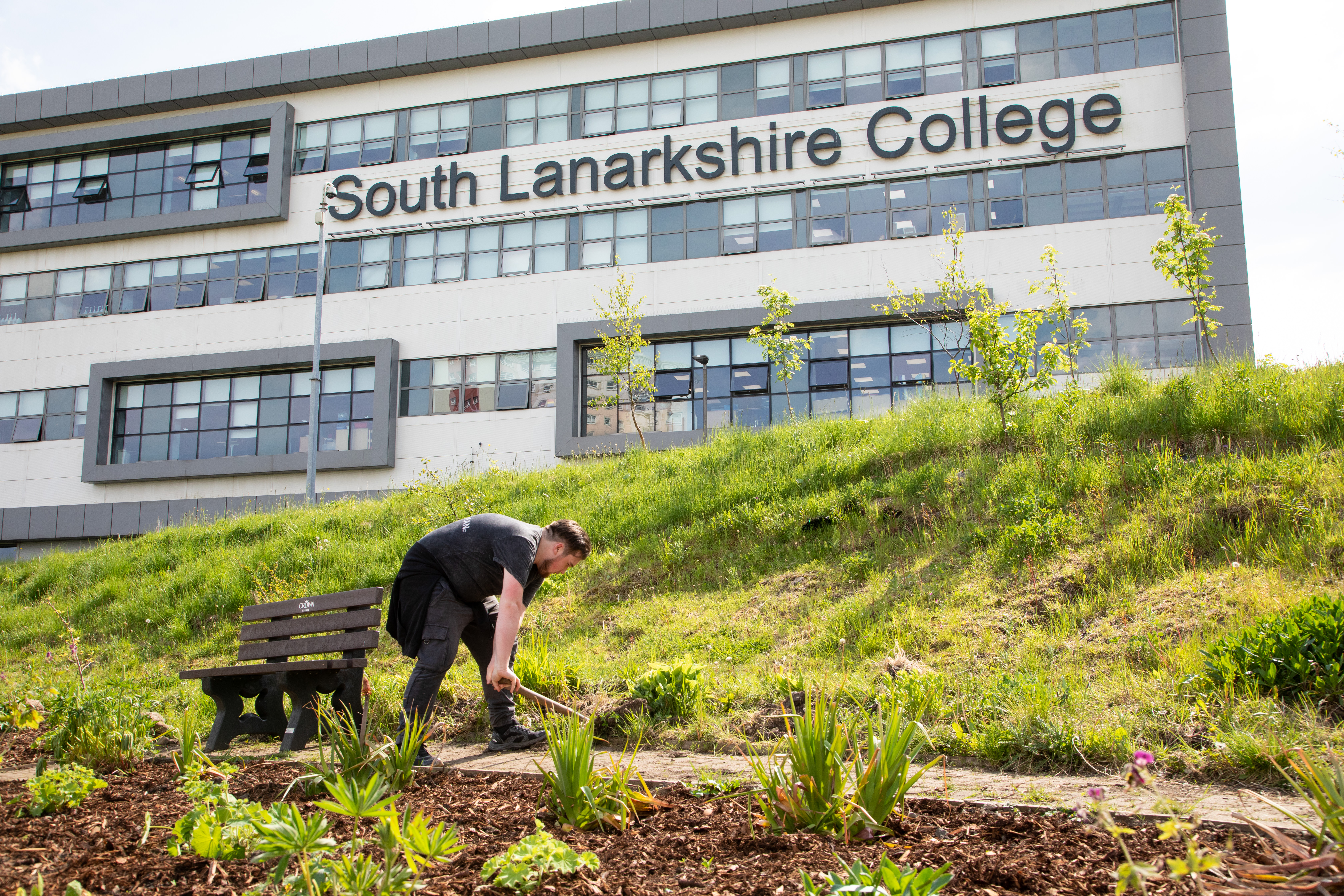A sustainable community campus
We are creating a better future for future generations, teaching our students the most sustainable and up-to-date practices for industry. Not only that, we are making the campus itself a sustainable place to work and study.
A low carbon approach for college and community
Our campus was built in 2008 for around 4,000 students of construction, business and care. The building achieved an energy performance certificate (EPC) of C.
In 2009 we launched a low carbon house project with over 53 partner companies to construct the first affordable low-energy low-carbon house for the mass market. The house would also help combat fuel poverty.
This property achieved an A+ EPC with all technologies including solar photovoltaics (PV), solar thermal, ground source heat pump, rainwater harvesting and much more. Fabric first was the key ingredient within the build to minimise heat loss and maximise heat input. This work received accolades and was the subject of Scottish parliamentary motions. It catalysed change in the construction curriculum and is now embedded in other parts of the curriculum too.
As the college grew, we needed more space, and embarked on a similar project on a commercial scale. In 2016 we opened the first Building Research Establishment Environmental Assessment Method (BREEAM) outstanding build in the UK.
Read more about our approach in our sustainability policy.

Green gown award
Both projects received the Green Gown Award from the Alliance for Sustainability Leadership in Education (EAUC). The two additional standalone builds generate power through solar PV and heat by ground source heat pumps, exporting any additional energy to the national grid.
Over the last eight years, the main building of the college has been adapted to incorporate 70Kwp solar PV system, air source and ground source heat pumps within the construction wing.
It will benefit from technology adaptions to help meet the proposed net zero timeframe of 2035 to 38. These include:
- additional solar PV 150Kwp +
- solar car ports with battery storage
- additional heat pumps to take over 100% heat provision
- battery wall storage
- water conservation via taps, cisterns and so on
- airtightness of building
- central building management system (BMS)